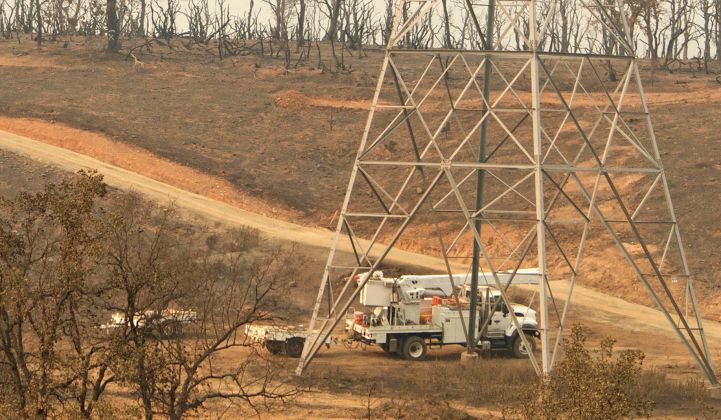PG&E’s restructuring is one of the biggest in U.S. history — and it could be considered the first climate bankruptcy.
The utility faces tens of billions of dollars in liabilities after investigators pinned the blame for over a dozen wildfires on PG&E equipment. What does it tell us about the health of utility infrastructure and corporate preparedness for climate risk?
The future structure of PG&E is still uncertain as it moves through bankruptcy proceedings. And California lawmakers are struggling with how to both protect utilities from and penalize them for wildfire damages.
This week on The Interchange, we are going to explain what wildfires mean for PG&E and other California utilities. We’ll speak with Katherine Blunt of The Wall Street Journal about what her reporting has uncovered.
Our current sponsor is PG&E. Please note: Our sponsors have no influence on the editorial content in our podcasts.
Read some of Katherine Blunt’s reporting:
- California Governor Proposes Fixes to State’s Wildfire Crisis
- PG&E Delayed Safety Work on Power Line That Is Prime Suspect in California Wildfire
- Judge Moves to Curtail PG&E’s Dividends Until it Reduces Wildfire Risks
Support for this podcast comes from PG&E. Did you know that 20 percent of EV drivers in the U.S. are in PG&E’s service area in Northern California? PG&E is helping to electrify corporate fleet vehicles. Get in touch with PG&E’s EV specialists to find out how you can take your transportation fleet electric.
We're also sponsored by Wunder Capital. Wunder Capital is the leading commercial solar financing company in the United States. Click here to find out how Wunder Capital can help you finance your next commercial solar project.
Subscribe to The Interchange podcast via Apple Podcasts, Google Podcasts, Stitcher, Spotify or wherever you find your audio content. Or integrate our RSS feed into the app of your choice.



